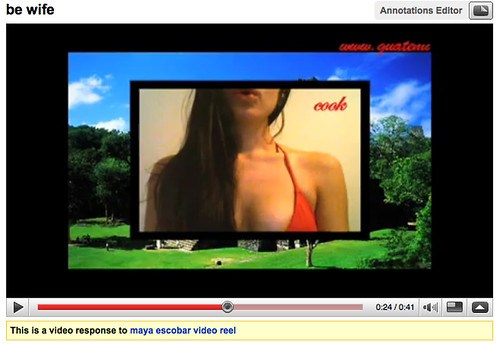If I haven't mentioned it before, I am quite the fan of awful horrible animated gifs. As I continue to work with seeNoga and Rio Yañez on the Jewish characters from Acciones Plásticas プリクラ: The Jewess Blogging Queen, The Avodah Girl and The 612er; I thought I would share this terrible image created early on in our collaboration. There is also another version (which I can no longer find) where in last frame of the gif sequence, it rains diet cokes. :)
take a picture of me for my myspace
In October of 2006 my rabbi started blogging. While trying to comment on one of his posts, I accidentally registered my own blog. Within hours of posting a comment, my name began appearing in Google searches. I was now linked to the post I had commented on, previous posts my rabbi had written, comments left by other users and the posts they had written elsewhere within the blogosphere. The rapidity with which I was branded, not only by my own online activity, but also by the online activity of others, seemed incomprehensible. I thought about this phenomenon in relationship to, the images that my friends and I had posted on Myspace throughout that year. I unknowingly went from being slightly annoyed and simultaneously amused by the phrase "take a picture of me for my Myspace", to it becoming completely natural and almost organic to document every moment, every outing, every time my friends and I put on make up, and to take pictures for Myspace. I saw this behavior even further exaggerated in the high school students I was student teaching. Their conversations were dominated with events that had transpired on Myspace, and when they were not talking about Myspace they were taking pictures for Myspace.When we talked about the factors that contributed to the construction of their individual and collective identities, my students were quick to bring up their style of dress, group of friends, the neighborhood they lived in, and the way they spoke. Yet not a single student referenced their online activity, the pictures they posted, the groups they joined, the comments they left on each others pages. I wondered why it was, that they were so aware of and adept at reflecting upon their experiences in the material offline world, but failed to mention the social network that played such a major role in their day-to-day lives.DECONSTRUCTING PERSONAL IDENTITY
I thought about this phenomenon in relationship to, the images that my friends and I had posted on Myspace throughout that year. I unknowingly went from being slightly annoyed and simultaneously amused by the phrase "take a picture of me for my Myspace", to it becoming completely natural and almost organic to document every moment, every outing, every time my friends and I put on make up, and to take pictures for Myspace. I saw this behavior even further exaggerated in the high school students I was student teaching. Their conversations were dominated with events that had transpired on Myspace, and when they were not talking about Myspace they were taking pictures for Myspace.When we talked about the factors that contributed to the construction of their individual and collective identities, my students were quick to bring up their style of dress, group of friends, the neighborhood they lived in, and the way they spoke. Yet not a single student referenced their online activity, the pictures they posted, the groups they joined, the comments they left on each others pages. I wondered why it was, that they were so aware of and adept at reflecting upon their experiences in the material offline world, but failed to mention the social network that played such a major role in their day-to-day lives.DECONSTRUCTING PERSONAL IDENTITY (today) I am referring to myself as a performance artist, Internet curator, and editor. I create and (concurrently) perform multiple online identities, by sampling from different representations of existing cultural discourses. I fragment my personal experiences and invite others to join in, and modify and regroup those fragments. By doing this I hope to share the process through which I deconstruct and reconstruct my individual conception of self, so that others can do the same in their lives.In the series Acciones Plásticas I performed representations of five constructed characters: a religious Jewish woman, a spoiled Jewish girl, a ghetto Latina, a sexy Latina professor, and a Mayan woman. I created low quality YouTube video blogs for four of the characters, the Mayan woman did not have a video, as she would not have had access to YouTube technologies. The videos were strategically placed on popular social networking sites, including YouTube and MySpace. The layout of YouTube contextualized the videos and framed them with user comments and similarly tagged user content. Jewish Girls was picked up by a popular left-wing Jewish blogging site Jewschool, and soon entered the Jewish Blogosphere where it was referred to as the JAP. This repositioning shifted the focus from the portrayal of multiple interwoven identities to a depiction of the Jewish American Princess. The JAP became how people knew my work, validating me while simultaneously conflating my identity with that of this particular character.
(today) I am referring to myself as a performance artist, Internet curator, and editor. I create and (concurrently) perform multiple online identities, by sampling from different representations of existing cultural discourses. I fragment my personal experiences and invite others to join in, and modify and regroup those fragments. By doing this I hope to share the process through which I deconstruct and reconstruct my individual conception of self, so that others can do the same in their lives.In the series Acciones Plásticas I performed representations of five constructed characters: a religious Jewish woman, a spoiled Jewish girl, a ghetto Latina, a sexy Latina professor, and a Mayan woman. I created low quality YouTube video blogs for four of the characters, the Mayan woman did not have a video, as she would not have had access to YouTube technologies. The videos were strategically placed on popular social networking sites, including YouTube and MySpace. The layout of YouTube contextualized the videos and framed them with user comments and similarly tagged user content. Jewish Girls was picked up by a popular left-wing Jewish blogging site Jewschool, and soon entered the Jewish Blogosphere where it was referred to as the JAP. This repositioning shifted the focus from the portrayal of multiple interwoven identities to a depiction of the Jewish American Princess. The JAP became how people knew my work, validating me while simultaneously conflating my identity with that of this particular character.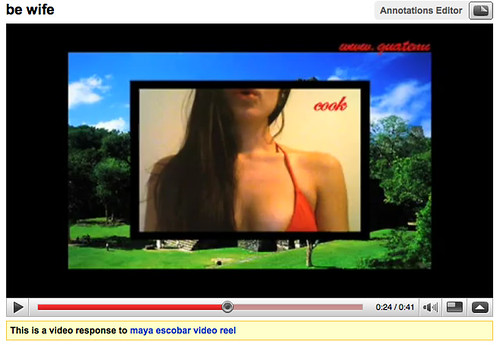 One of the strategies that I employed to counteract idea of "me as The JAP" was to group videos from the series Acciones Plásticas together with three other Youtube videos in a video reel of my work. The first video in the reel, el es frida kahlo is me dressed as Frida Kahlo where I violently scream I am Frida Kahlo! In second video Be Wife, I wear a bright red bikini top in front of an image of a Mayan temple in Tikal. Traditional Guatemalan marimba music plays in the background, while red text scrolls across the top reading Guatemala's finest export. The third video Que Sencilla, features me as a little girl, who is being coaxed by an off-camera male voice to perform a dance for the camera.Someone who is expecting to see a Jewish American Princess, is instead greeted with an enraged
One of the strategies that I employed to counteract idea of "me as The JAP" was to group videos from the series Acciones Plásticas together with three other Youtube videos in a video reel of my work. The first video in the reel, el es frida kahlo is me dressed as Frida Kahlo where I violently scream I am Frida Kahlo! In second video Be Wife, I wear a bright red bikini top in front of an image of a Mayan temple in Tikal. Traditional Guatemalan marimba music plays in the background, while red text scrolls across the top reading Guatemala's finest export. The third video Que Sencilla, features me as a little girl, who is being coaxed by an off-camera male voice to perform a dance for the camera.Someone who is expecting to see a Jewish American Princess, is instead greeted with an enraged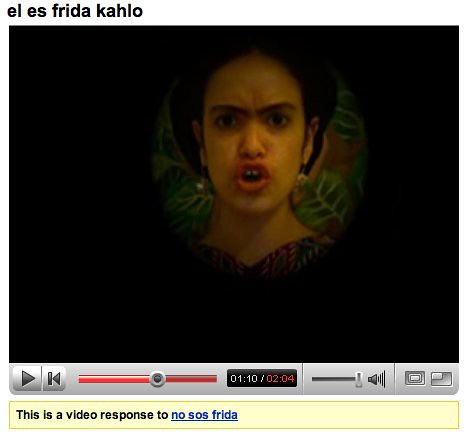 Latina artist, trying to fight the stigma of being associated with Frida Kahlo. My inclusion of these additional videos was to show the multidimensionality of the five characters initially presented in Acciones Plásticas. The Mayan women does not have her own YouTube video, but with the addition of the Be Wife video, her absence is felt even greater. The face of Guatemala in these videos, is the chest of a mail order bride. Another example can be seen within the four original videos themselves. With the grouping of the ghetto latina with the sexy latina professor, vast cultural and class difference can be seen between the two representations of Latina women. Put together with el es frida kahlo and Be Wife, there are suddenly five Latina performers all acting on one stage.
Latina artist, trying to fight the stigma of being associated with Frida Kahlo. My inclusion of these additional videos was to show the multidimensionality of the five characters initially presented in Acciones Plásticas. The Mayan women does not have her own YouTube video, but with the addition of the Be Wife video, her absence is felt even greater. The face of Guatemala in these videos, is the chest of a mail order bride. Another example can be seen within the four original videos themselves. With the grouping of the ghetto latina with the sexy latina professor, vast cultural and class difference can be seen between the two representations of Latina women. Put together with el es frida kahlo and Be Wife, there are suddenly five Latina performers all acting on one stage.
Jewish Girls Youtube Comments
Jewish Girls from the series Acciones Plásticas
[youtube=http://www.youtube.com/watch?v=GBjBN0ftcP0]Responses to Jewish Girls
[youtube=http://www.youtube.com/watch?v=PQphBV2Q0ZE]
video reel
[youtube=http://www.youtube.com/watch?v=3li_mT--f-A&hl=en]
Bitch Magazine
Acciones Plásticas was discussed in current issue of Bitch Magazine Lost and Found #38. The article is entitled The Princess Diaries: In an Age of Ostentation the J.A.P. is Back written by Julia Appel, a rabbinical student at Hebrew College.To view the full article (pdf version) click here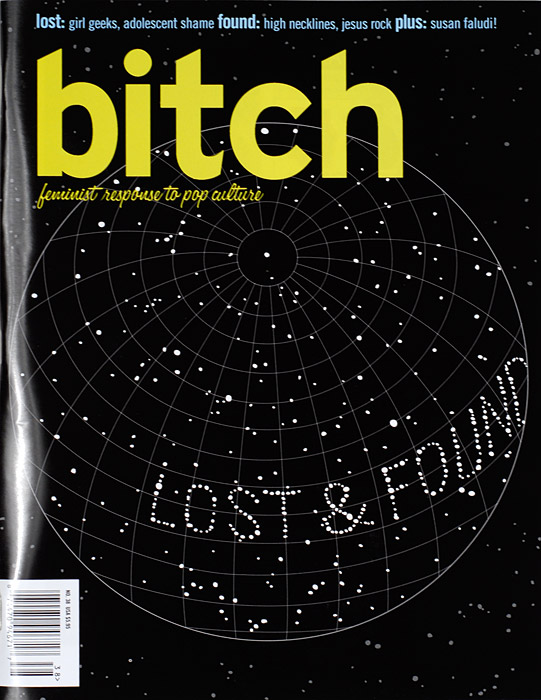
One blogger on Jewschool questioned the artistic success of a new piece by a performance artist named Maya Escobar entitled Acciones Plasticas (Plastic Dolls), in which the artist impersonates in short video segments various stereotypes that make up her identity. Her send-up of the J.A.P. was familiar to me from my years spent in a heavily Jewish, upper-middle-class suburb of Boston. Escobar's J.A.P. flips her straight dark hair and fiddles with her silver jewelry as she talks insipidly about her high-school popularity and rejection of male suitors. The blogger wrote by way of illustration, "She...nails the J.A.P. with a monologue so infuriatingly vapid and unaware it's as excruciating as the real-life experience."

[...]Using the Jewish American Princess in a deadpan manner can result in a sophisticated social critique that reveals how ridiculous the stereotype itself. The key is absurdity: Take Sarah Silverman, who frequently conjures the J.A.P. in her comedy, with mixed results [...] Maya Escobar's piece also falls in this category: by contextualizing the character in her video as a "doll" she reveals how ridiculous it is to take the character seriously. But what about the less-successful attempts at deploying the term? The reason "J.A. P." is ripe for reclamation is because it stands at the border between resonantly hateful and outdated. Although not as widely used as it once was, it still packs a punch. Therefore, if the context is not skillfully executed, the attempt serves not to interrogate or reclaim, but rather only to perpetuate the myth[...]
How does it feel to be called a JAP?
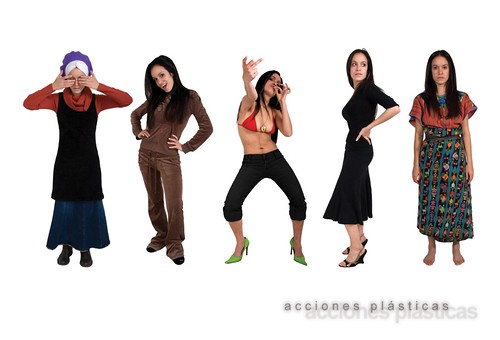 Please take this as an opportunity to let your voice be heard. I welcome anyone who would like to offer a response online, either written or in the form of a video blog. Remember that the acciones plásticas videos are not the stereotypes themselves, they are women who have be affected by their presence.I will continuously update this post with videos as they are submitted. "How does it feel to be called a _____?" Feel free, (but not limited) to respond to the stereotypes I have presented. Use this as an opportunity to share your own experiences.If you are an educator takes this as an opportunity to discuss these issues with your students. I am in the process of developing curriculum for presenting acciones plásticas in the classroom.
Please take this as an opportunity to let your voice be heard. I welcome anyone who would like to offer a response online, either written or in the form of a video blog. Remember that the acciones plásticas videos are not the stereotypes themselves, they are women who have be affected by their presence.I will continuously update this post with videos as they are submitted. "How does it feel to be called a _____?" Feel free, (but not limited) to respond to the stereotypes I have presented. Use this as an opportunity to share your own experiences.If you are an educator takes this as an opportunity to discuss these issues with your students. I am in the process of developing curriculum for presenting acciones plásticas in the classroom.

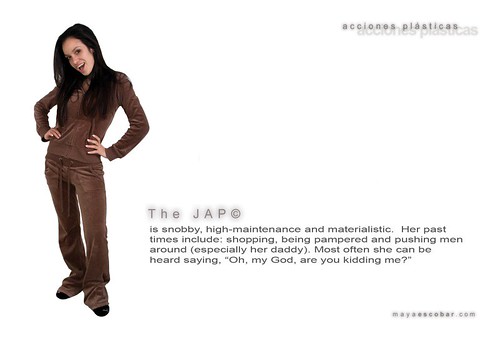
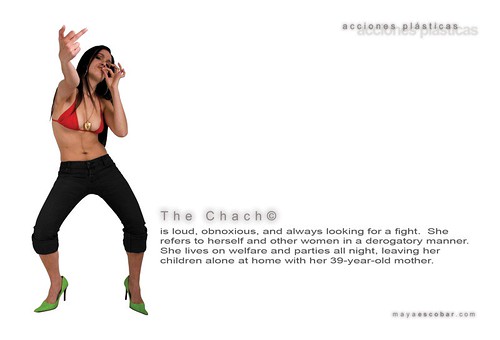

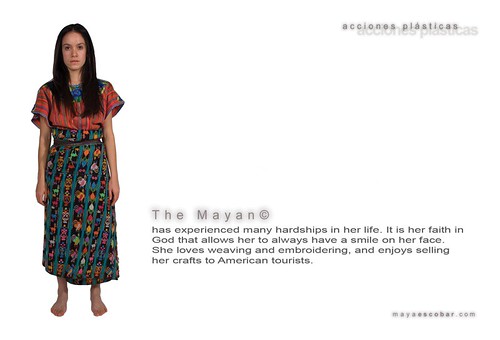
while the "youtube" video blogs are played on a reel.


 The public will be invited to respond, by altering the text accompanying each doll. Over the course of the exhibition the original cards displaying the stereotype will be replaced by the new cards with altered text.Your video responses will be incorporated into the reel. From the show Now I am asking you to participate. Hopefully viewing these images has caused you to question if and when similar stereotypes have been applied to you or those around you. Please take the time to share your experiences by clicking on any of the dolls to submit your response.
The public will be invited to respond, by altering the text accompanying each doll. Over the course of the exhibition the original cards displaying the stereotype will be replaced by the new cards with altered text.Your video responses will be incorporated into the reel. From the show Now I am asking you to participate. Hopefully viewing these images has caused you to question if and when similar stereotypes have been applied to you or those around you. Please take the time to share your experiences by clicking on any of the dolls to submit your response.



 I have included a section with guiding questions. If you have more you would like to submit post them herePlease feel free but not limited to answering the following questions regarding each doll:
I have included a section with guiding questions. If you have more you would like to submit post them herePlease feel free but not limited to answering the following questions regarding each doll:
Is there any truth to this description?Are all of these things negative?What is the origin of this stereotype?What is a _________ really like?What does this stereotype leave unsaid?
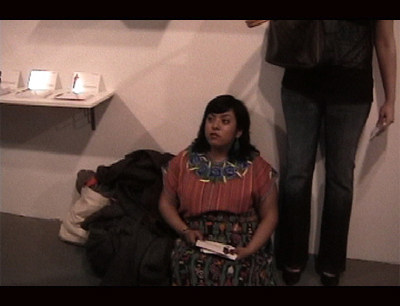 [youtube=http://www.youtube.com/watch?v=-kohK1qimhI][youtube=http://www.youtube.com/watch?v=4Zsr4NmtG0I]
[youtube=http://www.youtube.com/watch?v=-kohK1qimhI][youtube=http://www.youtube.com/watch?v=4Zsr4NmtG0I]

The JAP©
from the series acciones plásticas

[youtube=http://www.youtube.com/watch?v=GBjBN0ftcP0]click here for Kol Ra'ash Gadol's critque on Jewschool about this piece.
When Maya Escobar uses this stereotype she may be either mocking it or indulging it - or both - that’s one of the dangers of comedy. She clearly thinks that she’s mocking it, and attempting to provide a conversation starter (Okay, Maya, so here I am starting a conversation: Kol hakavod!) But even in her attempts to mock the stereotypes that have been projected onto her (and let’s be clear the chach and the sexy latina aren’t any better!), I have to wonder about those who are watching the comedy, and whether it helps them reject - or accept- those experiences in which they met a person onto whom they themselves projected such a label. “After all, how can she “nail the JAP” if there’s no JAP to be nailed, if the JAP happens to simply be a person whom one dislikes upon meeting, but no more likely a Jew than a Lutheran? In order for it to confirm that glorious feeling, one has to have a little sense that there is something about being Jewish and female that attaches to that kind of behavior, n’est ce pas?
she offers the following linksan exerpt from Dr. Evelyn Torton Beck’s essay "From ‘Kike to Jap’:How misogyny, anti-semitism, and racism construct the Jewish American Princess."bibliography of the analysis of the JAP stereotype www.lilith.org/landmark_articles/jap.pdf




